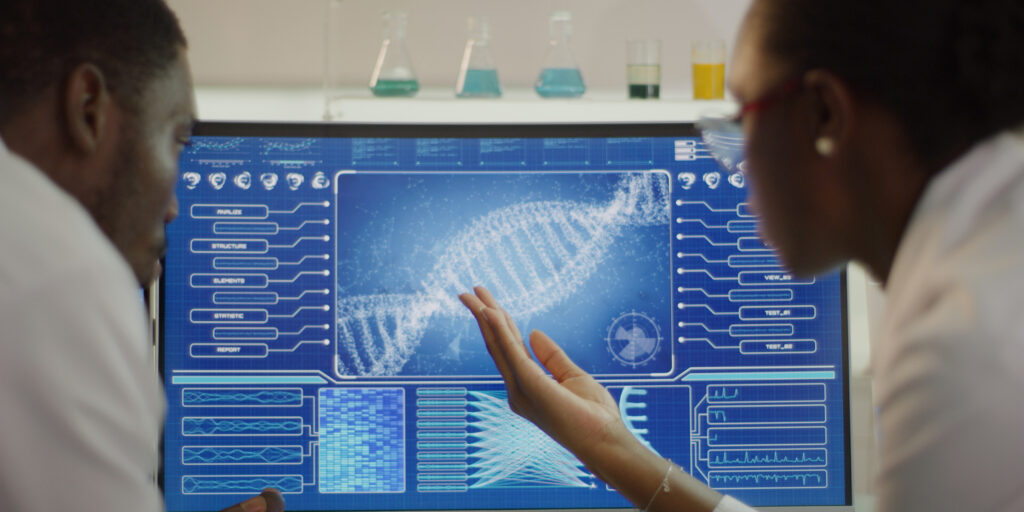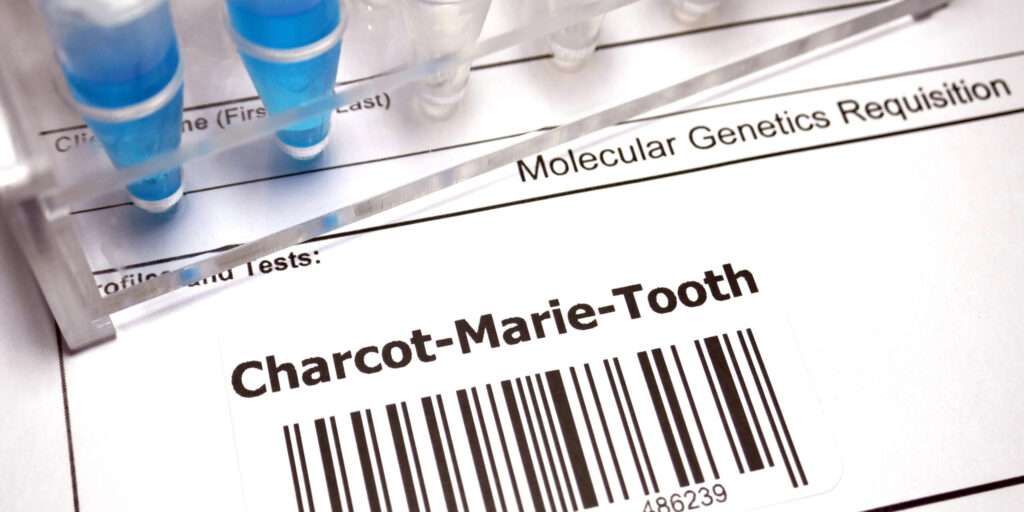
Simply Stated: Updates in Oculopharyngeal Muscular Dystrophy (OPMD)
By Sujatha Gurunathan | Thursday, January 26, 2023
5 Second Summary
“Simply Stated” is a Quest column designed to explain some terms and basic facts about neuromuscular diseases.
Find more at Mdaquest.org/tag/simply-stated
Oculopharyngeal muscular dystrophy (OPMD) is a rare, slowly progressive muscle disease that is characterized by weakness of the eyelids (ocular) and throat (pharyngeal) muscles. In some cases, OPMD also causes muscle weakness in the arms and legs. Though the exact prevalence is not known, it is estimated that there are less than 50,000 people living with OPMD in the United States.
Symptoms of OPMD
The symptoms of OPMD usually begin around the age of 40-50 years old, but can occur earlier or later in some. People with OPMD may first notice droopy eyelids (a condition known as ptosis), which can impair vision. Over time, affected people may begin to tip their head backward to see properly.
In addition to droopy eyelids, people with OPMD often experience difficulty swallowing (dysphagia) and sometimes speaking (dysarthria). Dysphagia can make it hard to eat food or drink liquids, sometimes leading to unhealthy weight loss. Dysphagia can also cause aspiration of food or liquid into the lungs, potentially leading to a serious lung infection called aspiration pneumonia.
As OPMD progresses, some people develop weakness of the proximal (close to the body center) arm and leg muscles or the distal (far from the body center) muscles of the lower arms, lower legs, hands, and feet. Muscle weakness in the limbs may cause difficulty walking or performing everyday tasks.
For more information about the signs and symptoms of OPMD, a clinical overview can be found here.
Cause of OPMD
OPMD is caused by mutations (known as GCN repeat expansions) in the PABPN1 gene. This gene provides instructions for making the PABPN1 protein, which is found throughout the body and plays an important role in the processing of messenger RNA molecules (mRNAs) in the cell. PABPN1 gene mutations cause abnormal PABPN1 proteins to be made, and these abnormal proteins form nonfunctional clumps in muscle cells. These clumps accumulate and impair the normal functioning of muscle cells, eventually leading to muscle cell death and subsequent muscle weakness.
Diagnosis of OPMD
A doctor may begin to suspect an OPMD diagnosis based upon clinical evaluation, a detailed patient history, and identification of characteristic findings, such as ptosis, dysphagia, and dysarthria. A diagnosis of OPMD can usually be confirmed through commercially available blood tests that detect PABPN1 gene abnormalities associated with OPMD. Sometimes, a muscle biopsy may help to confirm the diagnosis by uncovering OPMD-related changes in muscles cells that can be seen using a microscope.
Current management of OPMD
While there is currently no cure for OPMD, supportive, multidisciplinary care can improve the overall health of people living with this disease. Treatment plans are typically individualized to meet the needs of the affected person, and may include recommendations from a variety of specialists. Symptomatic treatments include:
Ptosis
To address ptosis, some people use attachments to glasses that hold the eyes open, known as eyelid/ptosis crutches, as a temporary solution. Plastic surgery is sometimes recommended when ptosis interferes with vision. The goal of surgery is to raise the eyelids so patients may see. Complications of surgery are common, however, and can include infection or the inability to completely close the eyelids.
Dysphagia
There are a number of techniques that may help treat dysphagia, ranging from holding the head in different positions to changing the size and/or consistency of foods and liquids. Cutting food into small pieces and using commercial thickeners to give liquids a more manageable consistency are common strategies to make swallowing easier. People with OPDM that experience frequent choking while eating or drinking may need to have their swallowing abilities evaluated by a professional.
In advanced cases, a nonsurgical procedure called cricopharyngeal (CP) dilation or a surgical procedure called a CP myotomy may be warranted. These procedures target the muscles that surround the throat to allow easier passage of food and liquids into the esophagus. CP myotomy improves symptoms in most cases, however, in about one third of OPMD patients, dysphagia symptoms recur a few years after surgery. Another option in advanced cases is the insertion of a feeding tube from the outside of the body directly to the stomach, which bypasses swallowing altogether.
People experiencing dysphagia can get a referral from their MDA Care Center for a speech-language pathologist (SLP) or an otolaryngologist (ear, nose and throat doctor) as needed.
Limb weakness
People with OPMD that experience muscle weakness in their upper legs and hips may have trouble walking. To avoid stumbling and falls, they are advised to use orthopedic devices such as leg braces, canes, or walkers. To make mobility more convenient during later stages of disease, people with OPMD may need to use a wheelchair.
People with OPMD that experience muscle weakness in their upper arms and shoulders may have difficulty performing everyday tasks. Arm weakness that limits function can be addressed with adaptive techniques through occupational therapy. For example, strategies such as placing objects in easy-to-reach locations can help.
Evolving research and treatment landscape
While the standard of care is still symptom management, research advances and the promise of better therapeutics on the horizon offer hope for people living with OPMD. Knowledge about the underlying gene defect that causes OPMD and the processes that contribute to disease are guiding the development of new treatment strategies. Small molecule and gene manipulation/replacement technologies have been approved by the US Food and Drug Administration (FDA) for neuromuscular conditions such as Duchenne muscular dystrophy (DMD) and spinal muscular atrophy (SMA), and these advances have led to hope that similar treatments may be developed for OPMD.
Areas of active research to find targeted therapies for OPMD include:
Gene therapy – This approach aims to stop abnormal PABPN1 protein from being made from the defective PABPN1 gene, while also introducing a normal PABPN1 gene into muscle cells. Gene therapy has been successful in preclinical (animal) studies of OPMD, and one such drug, BB-301 (AXO-AAV-OPMD) from Benitec Biopharma, is expected to enter clinical trials soon.
Pharmacological intervention – Small chemical compounds that block protein aggregation inside the cell are being considered for OPMD. However, only one drug, trehalose, has progressed to clinical trials. Trehalose showed some efficacy clinically, but is still under evaluation.
Cell-based therapy – Transplantation of muscle progenitor cells (myoblasts) from a patient’s normal muscles to their affected muscles has shown promising results in clinical trials. However, a large number of cells is needed to see an effect, and the cells being transplanted still carry the defect in the PABPN1 gene. One approach to address this concern is to use gene editing strategies to correct the defect in myoblasts before transplantation.
In addition to gene-targeted approaches, researchers are studying ways to generally preserve muscle cells in OPMD. One method is the use of antibodies to block myostatin, a protein that normally inhibits muscle growth. This approach was shown to improve muscle mass in animal studies of OPMD. Researchers are also studying biochemical signals that favor muscle repair, maintenance and regeneration, with the aim of improving these functions in OPMD.
MDA’s work to further cutting-edge OPMD research
Since its inception, MDA has invested more than $4 million in OPMD research. In fact, it was with MDA funding that scientists first identified the PABPN1 gene as the underlying cause of OPMD in 1988. More recently, MDA has supported a number of efforts to better understand the disease-causing processes that contribute to OPMD. Funded projects include:
Mechanisms of Muscle Specificity in OPMD (2010-2012), Dr. Luciano Apponi
The goal of this study was to determine why defects in the PABPN1 gene primarily affect muscle tissue in OPMD, but not other parts of the body.
Regulation of PABPN1: Implications for OPMD (2013-2016), Dr. Ayan Benarji
The goal of this study was to determine how the PABPN1 gene is regulated in muscle cells, in order to see if the expression or function of this gene could be modulated as a therapy for OPMD.
Outcome Measures in OPMD (2013-2016), Dr. Sarah Youssof
This study explored the ability of particular outcome measures to describe the severity and impact of OPMD in patients, in order to determine if these measures could be used in future clinical trials.
A Knock-In Mouse Model for OPMD (2013-2015), Dr. Grace Pavlath
In this project, researchers created a new animal model of OPMD that more closely mimics the underlying gene defects that cause human disease, in order to have a better tool to use for pre-clinical studies of OPMD.
Understanding Pathology in OPMD (2016-2019), Dr. Anita Corbett
This project uses two different animal models of OPMD to study whether the clumping of PABPN1 protein in muscle cells or the loss of normal PABPN1 function in muscle cells is the main cause of disease in OPMD.
These and other preclinical studies will help researchers gain a fundamental understanding of the molecular and cellular events involved in OPMD disease progression. This will help to identify new targets for therapeutic intervention and new biomarkers to help with earlier diagnosis and targeted treatment planning, thereby improving disease management for people living with this disease.
Next Steps and Useful Resources
- MDA’s Resource Center provides support, guidance, and resources for patients and families, including information about oculopharygeal muscular dystrophy, open clinical trials, and other services. Contact the MDA Resource Center at 1-833-ASK-MDA1 or ResourceCenter@mdausa.org.
- For more information about the signs and symptoms of Oculopharyngeal Muscular Dystrophy (OPMD), as well an explanation of the causes of disease, an in-depth overview can be found here.
- Stay up-to-date on Quest content! Subscribe to Quest Magazine and Newsletter
TAGS: Clinical Trial, Gene Therapy, Grants, Research, Research Advances, Simply Stated
TYPE: Blog Post
Disclaimer: No content on this site should ever be used as a substitute for direct medical advice from your doctor or other qualified clinician.




